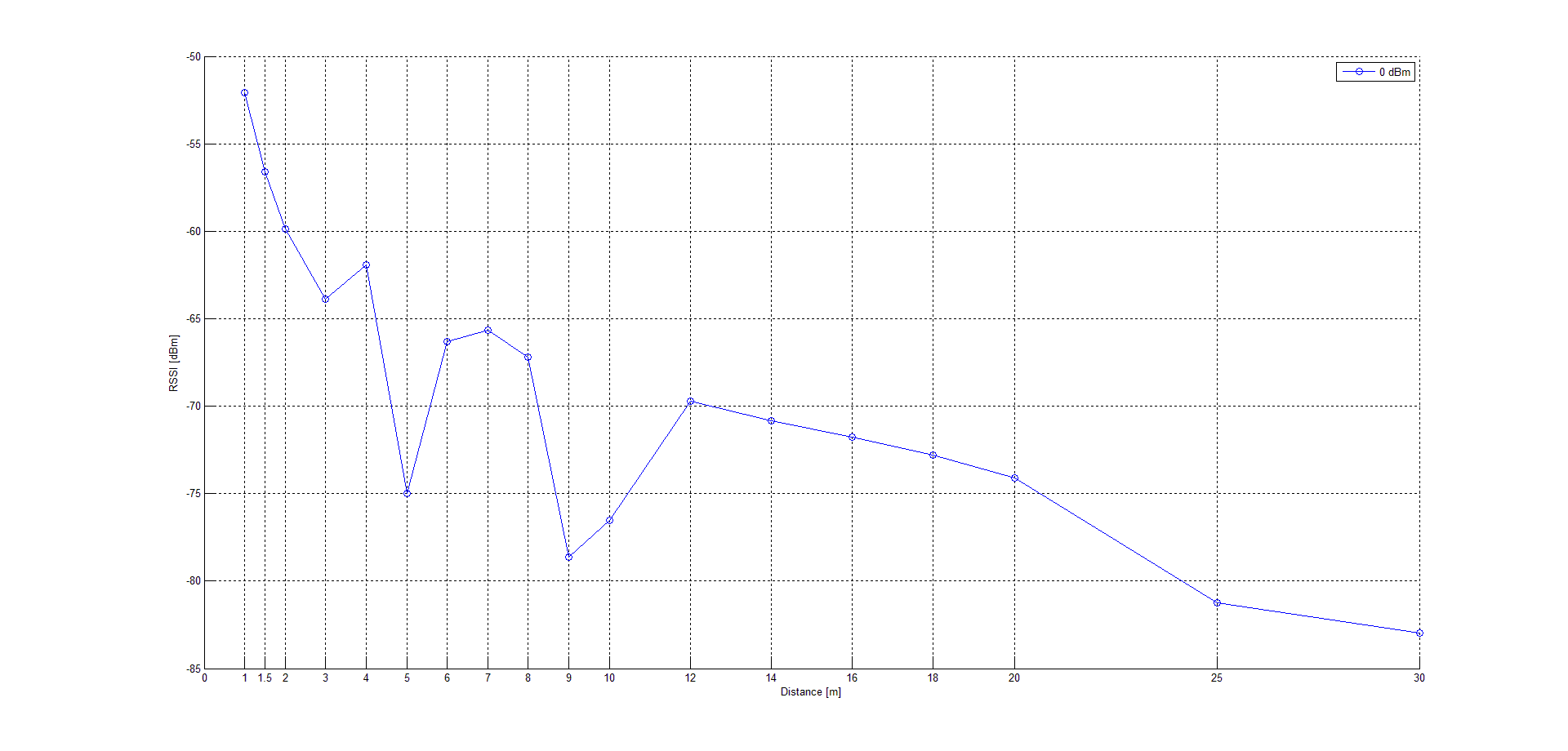Hello everybody,
I'm designing an app to track the position of the smartphone using six beacons and, in order to do that, I made some measures both indoors and outdoors and plotted a graph of RSSI vs distance using the data acquired from nRF Connect app (exported to .csv and fed to Matlab). The first set of measures was taken in a corridor about 3m wide and 35m long at different transmission power level, the second set was taken outdoors in an open field about 30x25 m at 0 dBm transmission power. Both the plots show serious notches, as you can see from the pictures, causing great troubles with the accuracy of the tracking.
I'd like to know if this behaviour is to be expected or there is something wrong in the setup of the measures.
Thanks.



